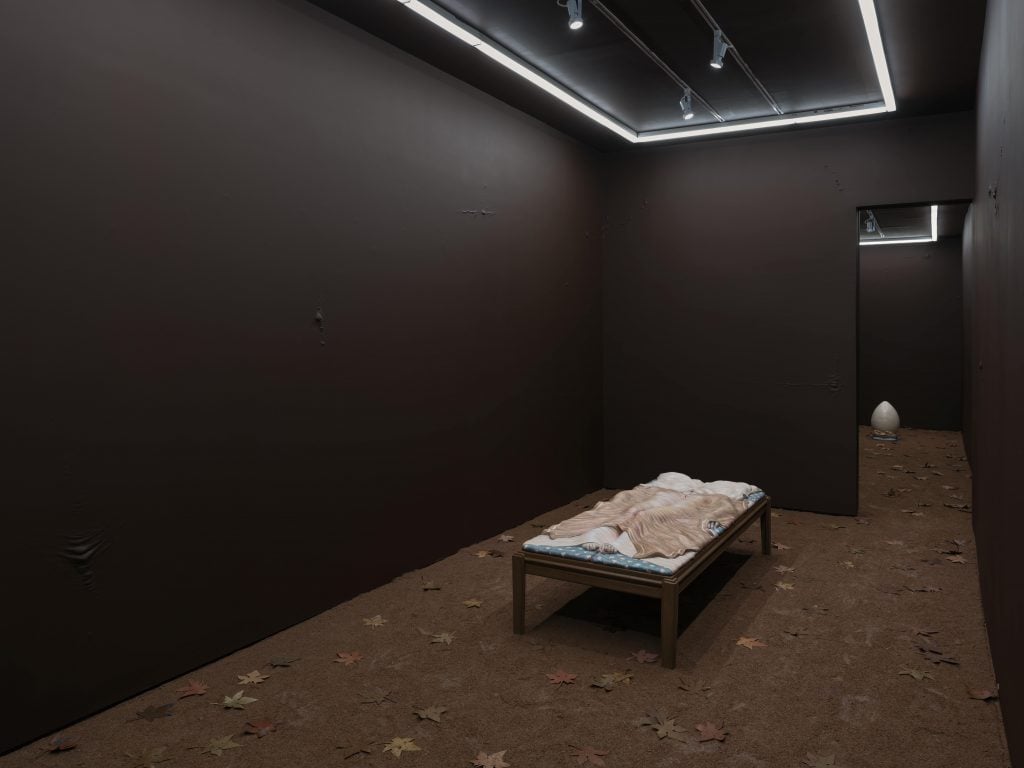
20 Dec A Gallery Tour Down New York's Henry Street in the Lower East Side
Source Credit: Content and images from Artnet News. Read the original article - https://news.artnet.com/art-world/gallery-tour-new-york-henry-street-2590053
Over the last couple years, a vibrant landscape of galleries, comprised of both new voices and seasoned fixtures, has coalesced in downtown Manhattan. Its epicenter is Henry Street, a stretch where compact storefront galleries coexist with the dim sum haunts, delis, churches, and the pulse of everyday life. And of course, there are stories like Anna Weyant’s—the painter went from showing at 56 Henry to Gagosian in a few short years—however Henry Street is more than just a blue-chip incubator.
Earlier this year, septuagenarian feminist icons Mira Schor and Laurie Simmons both opened shows in the neighborhood (at Lyles & King and 56 Henry, respectively). Adding to this creative ecosystem are nearby artist-run spaces and apartment galleries like New York Life Gallery, Tiwa Select, and Club Rhubarb. These spaces, including Club Rhubarb’s pop-up in a four-story Dimes Square townhouse, add to the orbit, each asserting their own unique approach to curation.
There’s no single formula, only an abundance of intrepid spirit. No surprise then that for the past three years, Henry Street galleries have dominated the Armory Show’s Gramercy Prize, which honors a commitment to showcasing experimental practice. The most recent recipient, Blade Study, follows the last recipient, No Gallery. You really can’t find a higher density of cutting-edge art in the city than the 10002 Zip Code. Here are some of the shows currently on view.

An installation view of Dan Herschlein’s “Deadman.” Courtesy of King’s Leap
Stepping into King’s Leap is like entering an interstitial space, a mini-realm between pre-war buildings. The unique elongated shape of the seven-year-old gallery suits it for site-specific installations that take advantage of the liminal vibes of this hallway-size space. Dan Herschlein’s living installation “Deadman” is equally surreal and solemn. The artist coated the gallery’s white walls in rich cocoa brown paint dotted with sagging protrusions reminiscent of the all too familiar paint bubbles in rental units with secret water damage and dusted the floors in sweeping compound and fall leaves that crunch like plodding through the forest. Herschlein’s attention to the gallery atmosphere pronounces their sculptures—a bed whose contoured putty linens resemble human skin flayed inside out, a pair of hands grasping a large plaster egg sat atop a folded pajama shirt structure, and an orange-handled faucet tucked into an unassuming corner replete with a clear epoxy trickle of water suspended on its way out of the spout.

Dan Herschlein, Man-Sized (2024). Courtesy of King’s Leap.
This year, King’s Leap has also hosted Harley Hollenstein & Julia Yerger’s toy car-shaped fiberglass sculptures in “Slush Box,” Emi Mizukami’s three-dimensional paintings of the sun and moon in “Pale Phantom,” and Nandi Loaf’s conceptual reception that turned the gallery into a series of permeable encounters. Present in owner and gallery director Alec Petty’s point of view is a dedication to material, and how objects can represent their own ineffability through thoughtful arrangement. On the horizon for 2025 is a group exhibition of emerging talent.

Jaeheon Lee, Figure in a garden (2022-2024). Courtesy of Management.
“Ghosts in the Garden” welcomes audiences into the ethereal world of Korean artist Jaeheon Lee. It’s the painter’s first New York solo exhibition in over a decade and feels both haunted and vital. Lee’s works unravel the fractures of Korea’s artistic identity, situating tradition against the global sheen of modernity. Through his “Idol” series, Lee’s fractured, layered figures shimmer with quiet dissonance—K-Pop idols trapped in ornate costumes. Throughout the series, their faces, fleeting as memory, emerge as smudged and haunted, with eyes rendered as voids.

Installation view of Jaeheon Lee, “Ghosts in the Garden” at Management, New York, 2024. Courtesy of the artist and Management, New York Photo: installshots.art
In a way, each work holds the specter of the figure before it, yet another conceptual layer to the role of the idol. Lee’s moody figurations connect the ruptured timelines of figurative painting to the city’s forward-facing art landscape. Here, tradition meets reinvention.
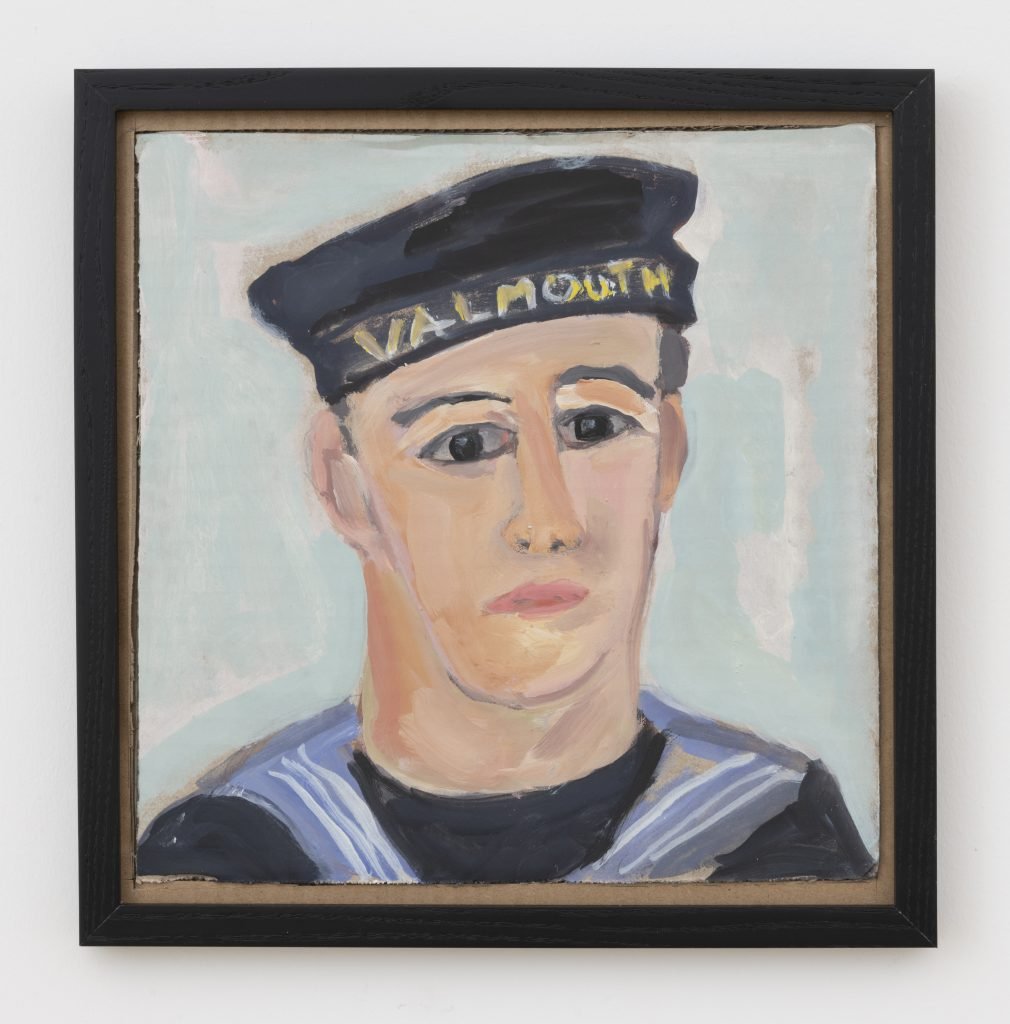
Hugo Guinness, Great Uncle Horatio, (2024). Courtesy of Elliott Templeton.
At the corner of Pike and Henry Street, Elliott Templeton Fine Arts captures the intersection of romanticism and perspective. The brainchild of Jack Pierson, and evidencing an elder statesman phase for the artist, the gallery opened earlier this spring with an inaugural show built from Pierson’s personal collection, inspired by his cross-country adventures finding hidden treasures from the collections of gay artists at antique stores. Inside, the subtle wainscoting on the walls and bronze art deco chandelier communicate the artistically esteemed air of a bygone era, which is apt, given that the gallery is named after a dandyish French aristocrat from William Somerset Maugham’s 1940s novel The Razor’s Edge.

Hugo Guinness, Cousin Arthur Three Times Removed (2024). Courtesy of Elliott Templeton.
Currently on view is “Imagined Ancestors,” a solo exhibition of oil paintings on cardboard by New York painter and printmaker Hugo Guinness, whose illustrations have appeared in The New Yorker and The New York Review of Books. Guinness’s portraits fancifully speculate his family members as figures from different historical periods, rendering their personalities in new contexts to probe at what it means to examine one’s ancestry. The use of oil on cardboard is an homage to another artist with a flair for color, the 19th century French painter Édouard Vuillard.

An installation view of Eric Rhein’s “Sweetness on the Mountain.” Courtesy of Fierman.
“Sweetness on the Mountain” features assemblage, sculpture, photography, and drawing by 63-year-old artist and writer Eric Rhein. The show’s centerpiece is a 71-piece composition of framed leaf-forms made of wire, part of the artist’s ongoing memorial project honoring lost friends and lovers.
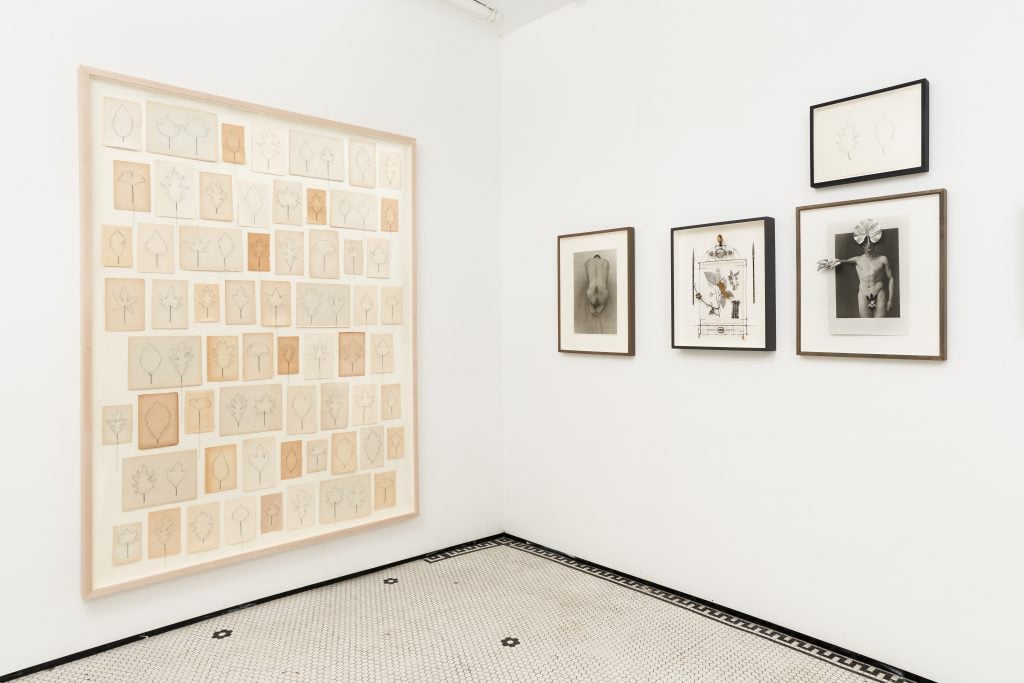
An installation view of Eric Rhein’s “Sweetness on the Mountain.” Courtesy of Fierman.
Talismans weave their way through photographs and framed collage works like moments to mark time with treasures, and also to treasure time. Rhein’s show fits into the gallery’s focus on queer perspectives, overlooked artists, and the intimacy of drawing. After eight years on Henry Street, this year David Fierman, also co-founded a new art fair dedicated to platforming the work of artists with physical and mental disabilities. Open Invitational debuted during Miami Art Week.
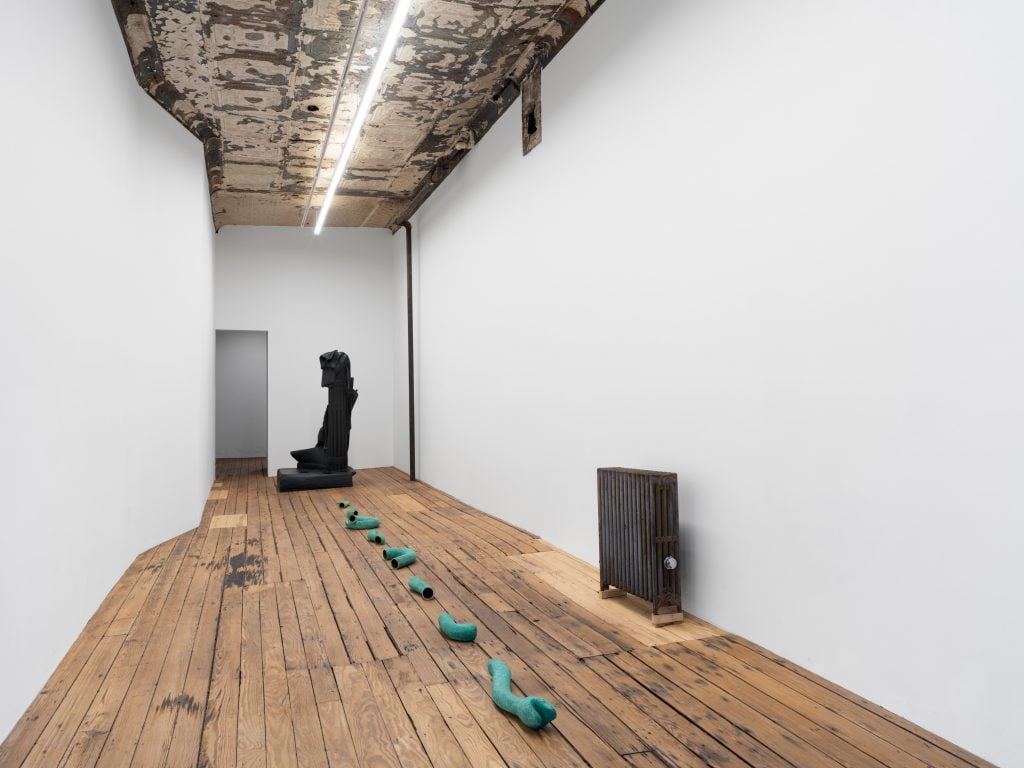
An installation view of Sean Townley’s “The Second Death” at Post Times. Courtesy the Artist and Ciaccia Levi, Paris-Milan
Post Times’s inaugural show had some name recognition, tapping art star Wade Guyton’s collaborative project with Kelly Walker, GuytonWalker, and pairing an almost 20-year-old work of theirs with a ten-year-old work by Sara Cwynar. There was a jokey simplicity to combining GuytonWalker’s sculpture of 106 paint cans with irreverent custom-made label stickers and Cwynar’s series of 16 chromogenic prints on the walls.
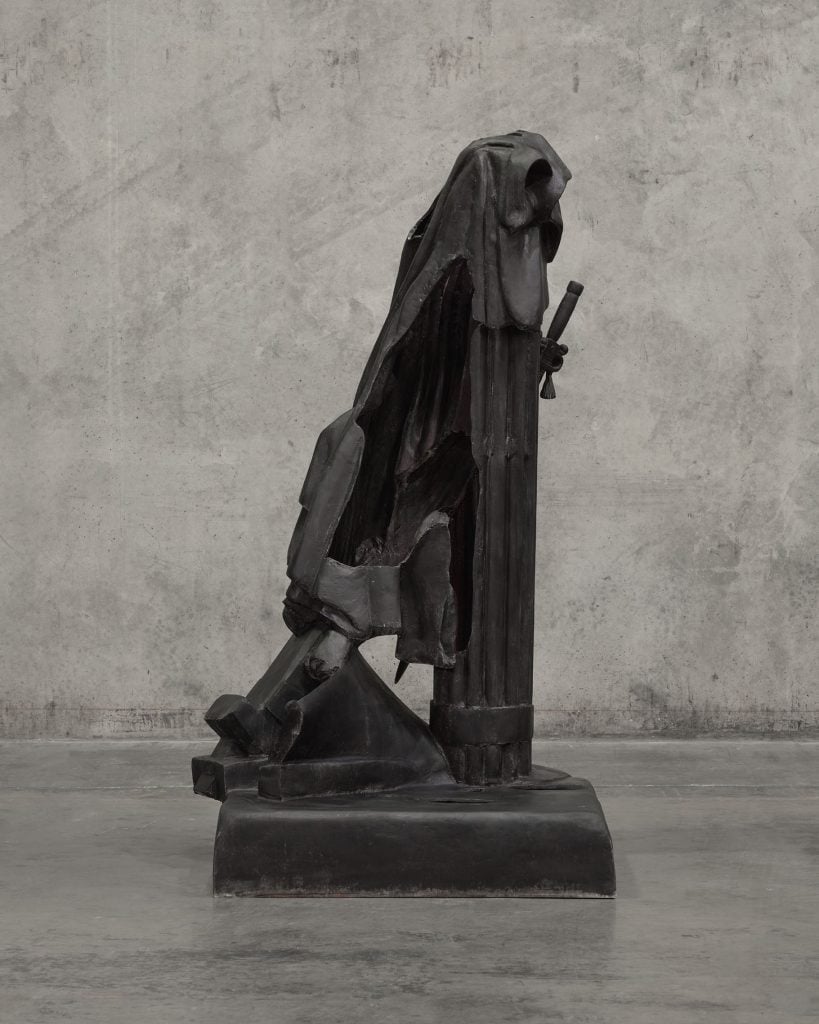
Sean Townley, Fasces with Plow (2024). Courtesy the Artist and Ciaccia Levi, Paris-Milan
The gallery’s latest show “The Second Death,” a solo exhibition with Los Angeles-based sculptor Sean Townley, is a somber counterpart to last year’s grand opening, a visual battle between belief and spirit that is unafraid of the overtly political. This is best seen in Fasces with Plow (2024), an acid-etched black aluminum sculpture based on a replica of an 18th-century statue of George Washington where the only representation of the first president is a set of cartoonish footprints carved out of the sculpture’s base, and Die Two (2022), a cast bronze snake that riffs off the metaphoric, dissected serpent in Benjamin Franklin’s 1754 “Join, or Die” political cartoon.
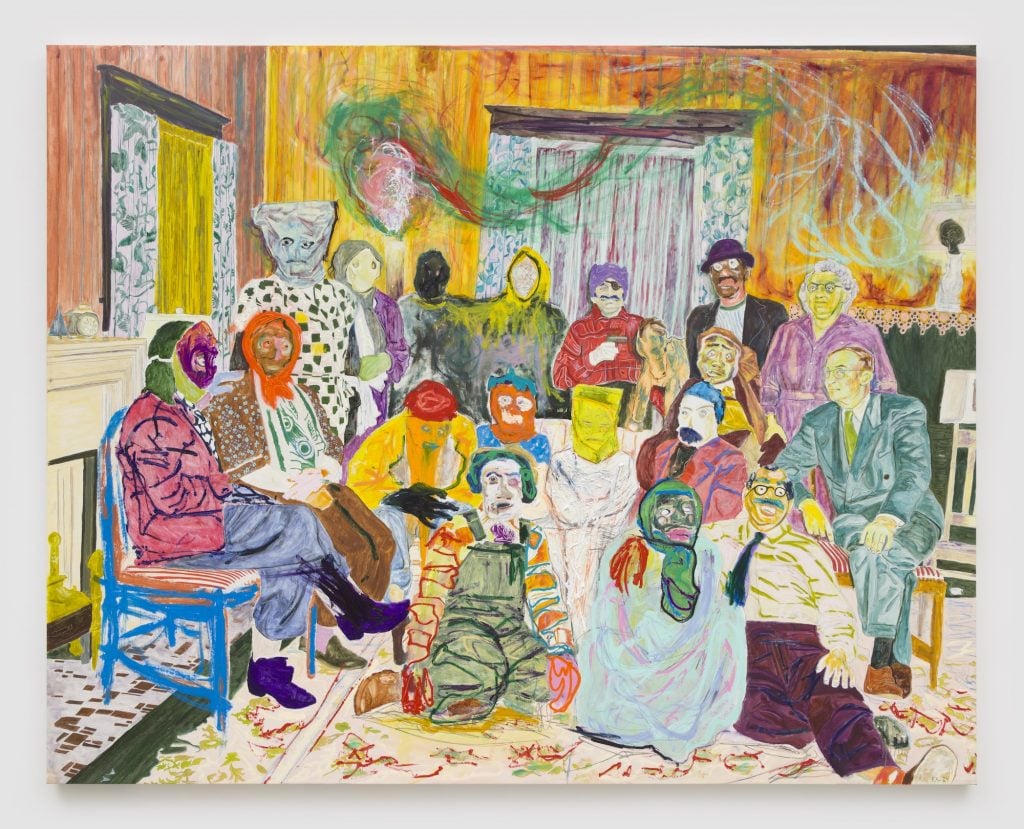
Farley Aguilar, The Others (2024). Courtesy of Lyle & King.
Lyles & King’s Henry Street space is so expansive that it technically goes through the other side, sharing an address on the perpendicular Catherine Street. Inside are two full gallery rooms that sometimes serve as a dual exhibition space, as well as an outdoor area for sculpture and performance. The gallery’s currently hosting two shows, Farley Aguilar’s “Haunted Futures” and Fernanda Galvão’s “From where I am | I am already gone.” The Nicaraguan painter Aguilar’s dystopian tableaux approach historical archetypes via painterly depth that approaches the grotesque, with daubs of paint sometimes poking out of his large-scale canvases where nipples and pubic hair decorate his characters.
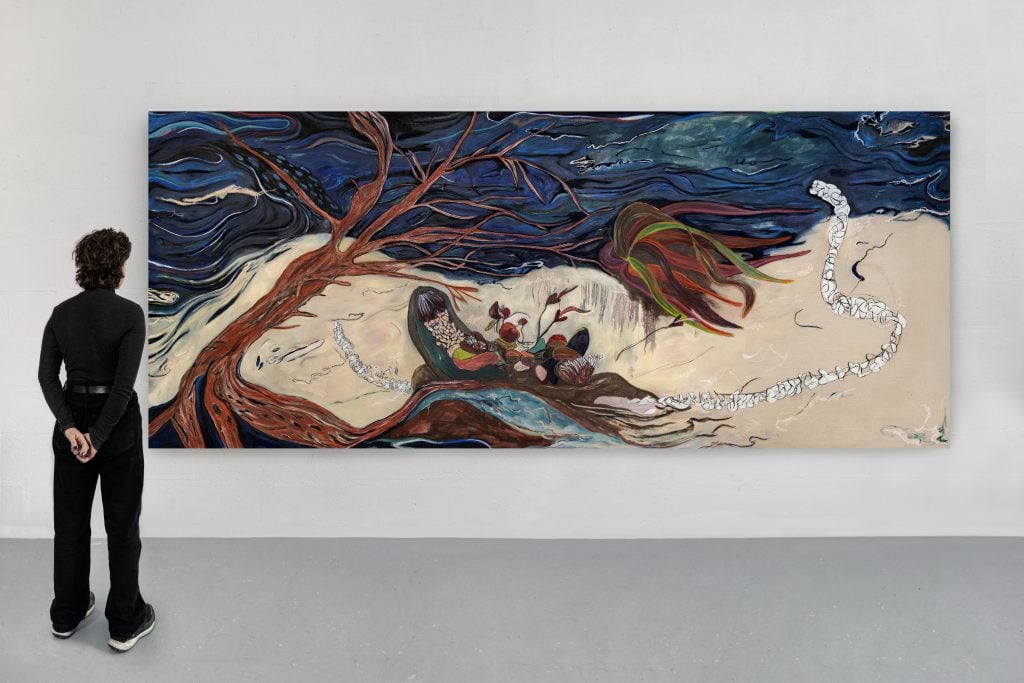
Fernanda Galvão, Earthsea Tree (2024). Courtesy of Lyle & King.
Galvão, in contrast, presents a meditative exploration of displacement and ecological fragility in her deep jewel-tones linen paintings. Her hybrid landscapes, steeped in botanical surrealism, propose futures rooted in resilience and care, and are so rich they look like velvet from afar. Lyles & King has a comparable focus on international artists but also represents emerging American talents like Catalina Ouyang and Kate Meissner.

Abel Macias, Little Point Dume (2024). Courtesy of Situations.
There’s a tender specificity to this show of Abel Macias’s geometric landscape paintings. These colorful abstracted vistas of forests, coasts, and desertscapes are inspired by the range of California environments, Macias’s home state. “A Place to Put a Memory” is the L.A.-based painter’s first show at Situations and the gallery’s last exhibition at their longtime Henry Street address. “It was a hard decision since I love that space so much—the tin ceilings and kooky wooden floors,” said Jackie Klempay who founded the gallery there more than eight years ago. “But I knew it was time for our artists to grow and stretch. Our Chelsea gallery is larger, so we’ll be operating out of that space for the foreseeable future.”
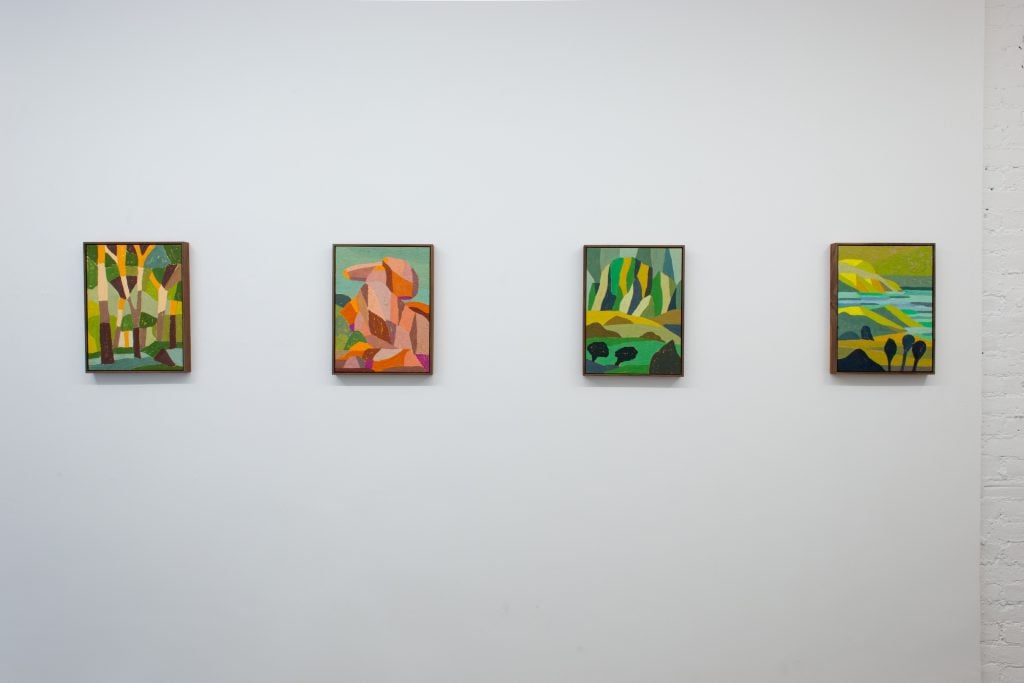
An installation view of “A Place to Put a Memory.” Courtesy of Situations.
Situations opened the Chelsea outpost in January. There’s a thread of geometric abstraction between Macias’s show and Corinne Jones’s “Drunkard’s Path” that just opened at that newer 20th Street space, its paintings inspired by a quilting pattern’s metaphorical significance in pursuing the non-cerebral. As it turns out, it’s not just the artists that move on from Henry Street but the galleries too.
Source Credit: Content and images from Artnet News. Read the original article - https://news.artnet.com/art-world/gallery-tour-new-york-henry-street-2590053

